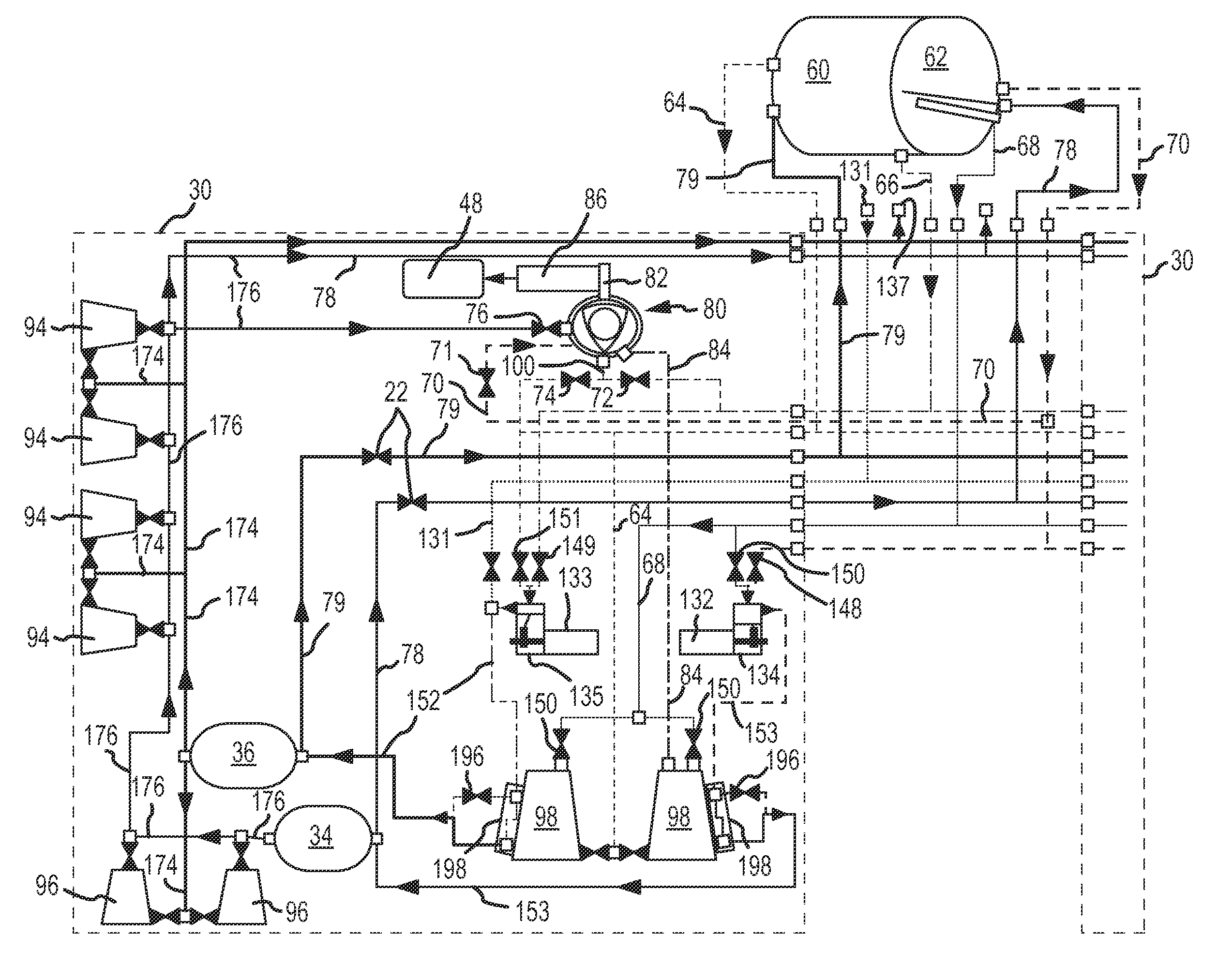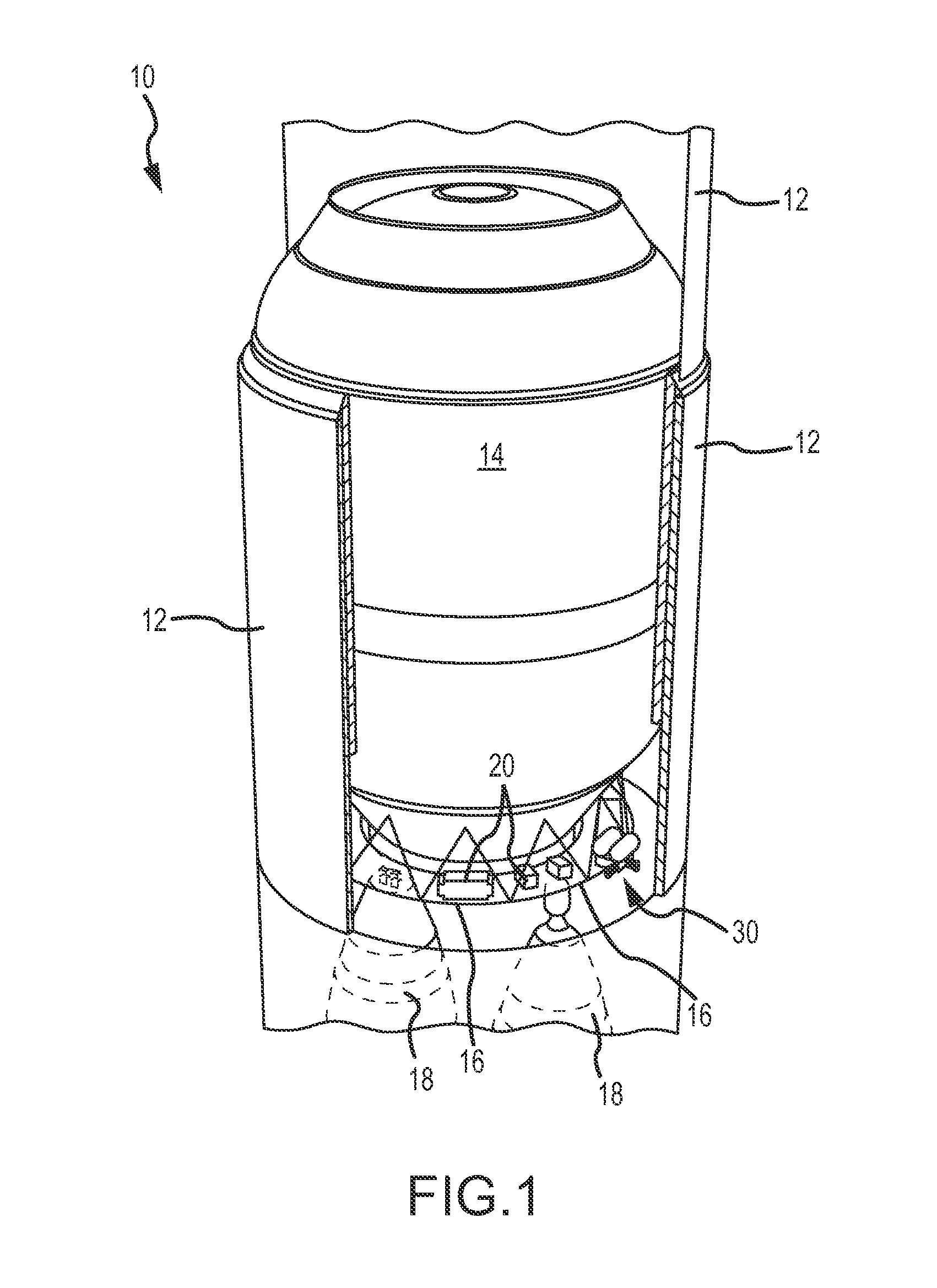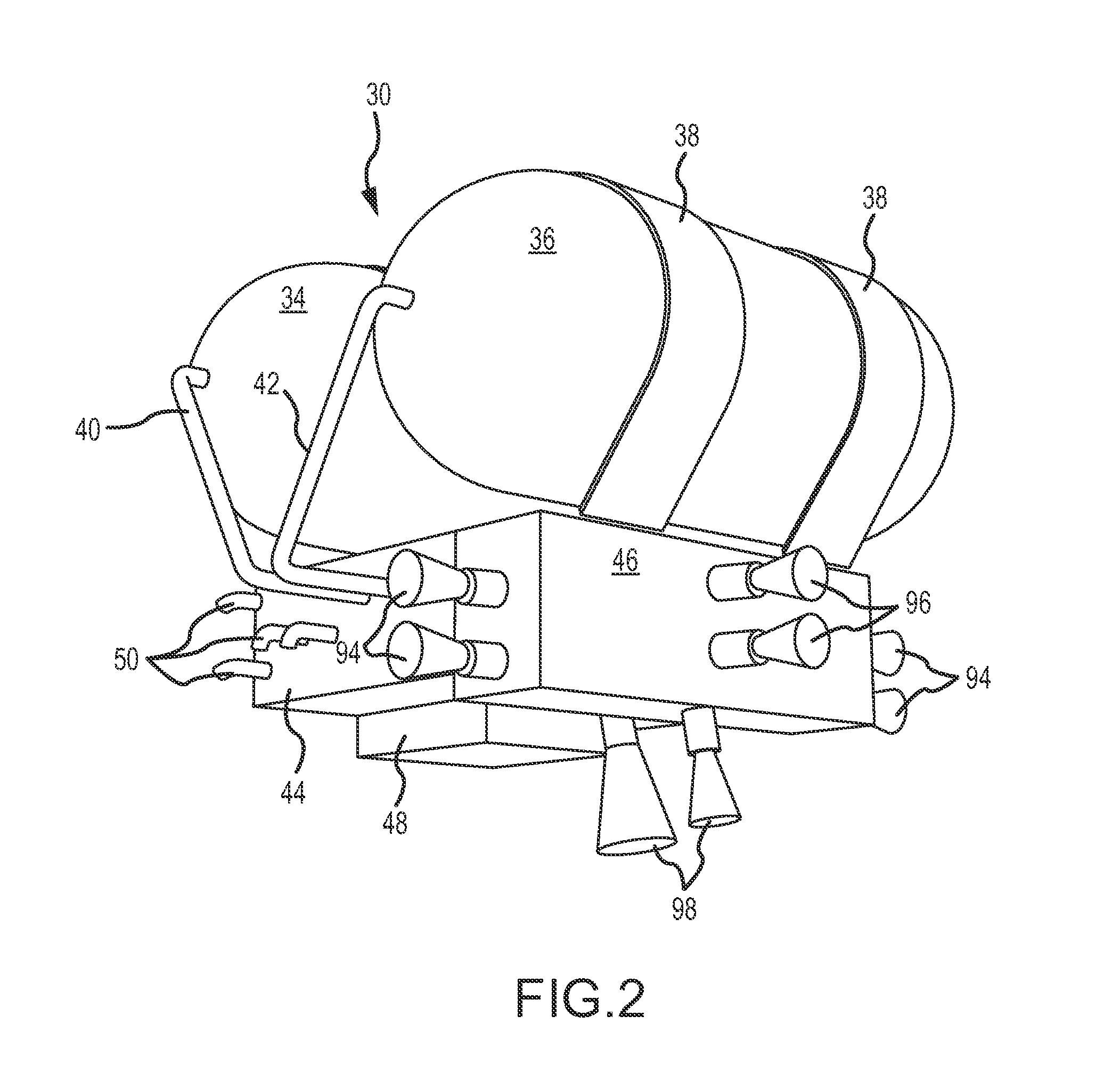Integrated vehicle fluids
a technology of vehicle fluids and integrated fluids, which is applied in the direction of vessels, instruments, explosions, etc., can solve the problems of increased pressure within the vehicle tank, difficult to improve upon, and complex cryogenic regulators, etc., and achieves the reduction of peak pressure, increased temperature, and decreased pressure
- Summary
- Abstract
- Description
- Claims
- Application Information
AI Technical Summary
Benefits of technology
Problems solved by technology
Method used
Image
Examples
Embodiment Construction
[0072]FIG. 1 illustrates the upper stage 10 of a space launch vehicle. The outer covering or shell 12 is broken away to view the propellant tanks 14, which comprise the liquid hydrogen tank 60 and the liquid oxygen tank 62 with a common bulkhead separating the tanks. The aft of the vehicle includes a circumferential deck 16 that provides for mounting of various system components 20 such as avionics, fluid and mechanical devices as well as the IVF module 30 of the present invention. FIG. 1 also illustrates the main propulsion rockets 18 that are used to propel the upper stage 10. In the Figure, the relatively small size of the IVF module 30 is shown. Preferably, there is an IVF module mounted on opposite sides of the aft deck 16. Twin IVF modules are able to generate more than enough power to supply all of the upper stage system requirements, yet reduce overall vehicle weight by eliminating much of the wiring harness mass associated with traditional vehicles that use battery power. T...
PUM
 Login to View More
Login to View More Abstract
Description
Claims
Application Information
 Login to View More
Login to View More - R&D
- Intellectual Property
- Life Sciences
- Materials
- Tech Scout
- Unparalleled Data Quality
- Higher Quality Content
- 60% Fewer Hallucinations
Browse by: Latest US Patents, China's latest patents, Technical Efficacy Thesaurus, Application Domain, Technology Topic, Popular Technical Reports.
© 2025 PatSnap. All rights reserved.Legal|Privacy policy|Modern Slavery Act Transparency Statement|Sitemap|About US| Contact US: help@patsnap.com



